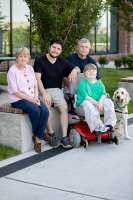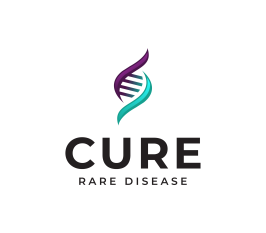From the moment of my brother, Terry’s, diagnosis of Duchenne muscular dystrophy, time was ticking away for my brother. For Terry, “sick" didn’t mean a runny nose, antibiotics, or missing school here and there. It meant walking into a movie theater only to get stuck at the steps leading to our seats because his progressive disease overcame his ability to lift his leg. Even 15 years later, the panicked look that washed across both my father and brother’s faces that day is something I will never forget.
Unfortunately, with progressive diseases, these moments don't stop. They become recurring.
Like the day my mom called and said: “Terry’s fallen again." Falls weren’t uncommon for my brother but with every fall the chances of him not being able to walk again increased dramatically. I was far from home and felt completely helpless. My family needed me, but I found myself having just started business school and months away from being able to be home with them.
A family impacted by rare disease only has two options: fight or stand idly by. Standing by wasn’t an option. So, I did what I could do in the place where I was. Fortunately for me, the place where I happened to be was Harvard Business School.
I decided to start thinking bigger.
My parents had spent years and tens of thousands of dollars doing everything they could to help my brother by giving him the best chance at a normal life that someone with Duchenne could possibly hope for.
Now, it was my turn to strike back.
With no drug or drug trial available to help and with precious time continuing to run out, I set out to find a cure for Terry.
I sent hundreds of emails to researchers, lab owners, chemists, biologists, and doctors. Anyone I thought might be able to help my brother received an email from me explaining my brother’s situation, the urgency I felt, and the mission I’d set off on to find a cure for him.
As I repeatedly hit send, I held my breath — just like when my mom would call. Except this time, it wasn’t fear I was feeling. It was determination. I was hopeful that my school’s name would be enough to get the attention, and help of, even one person I reached out to. And it was.
What happened over the next three years was a blur – an organization was founded, an unprecedented collaboration of the world’s leading researchers was formed, and a first-in-human therapeutic was developed, tested and manufactured to, not only treat, but stop a disease that has never had a survivor.
After hundreds of phone calls, millions of dollars raised, and thousands of hours of R&D, on a warm, sunny morning on July 15, 2022, I got the call that the FDA had approved our Investigational New Drug application to allow the clinical trial to proceed.
Heartbreakingly, we were not able to stop the disease for Terry. He passed away during the early stages of the clinical trial due to an immune reaction to the viral vector (AAV) used to deliver the therapy.
In some ways we were too late for Terry. At 27, his disease had progressed too far. In other ways, we were too early. New, better delivery methods are showing promise in the lab. But we used the best science we had available at the time to give him a fighting chance to hit back at a disease that took so much from him and our family.
Our story does not end here. It can’t. Because there are hundreds of thousands of Terry’s waiting for their chance to hit back.
Along the journey to develop a therapy for Terry, we met many of these patients and their families. All facing a future with no therapeutic options for a fatal disease. In the years since we began development on Terry’s therapy, we launched new programs for other diseases including other rare mutations of Duchenne, Limb-girdle muscular dystrophies, SCA3 and ADSSL1. And this pipeline continues to grow.
Terry’s outcome is not what we hoped for, but his legacy is the model we built to develop a treatment for him. A model and team that works to treat patients deemed untreatable by commercial entities.





